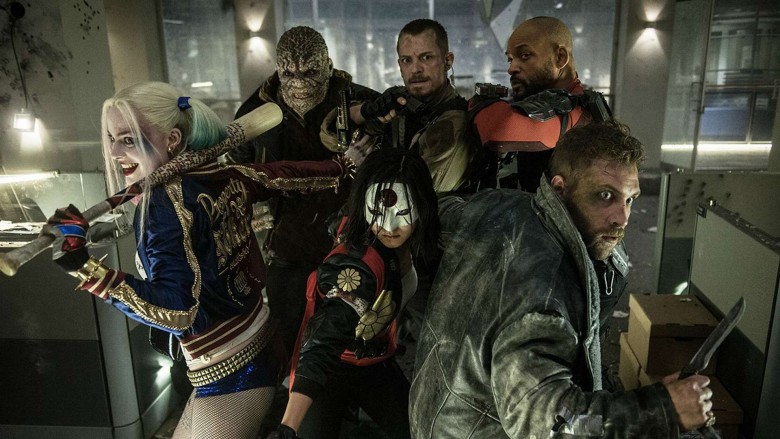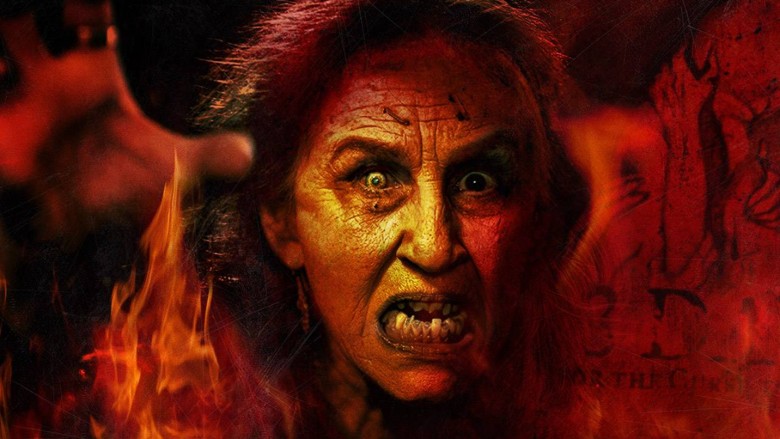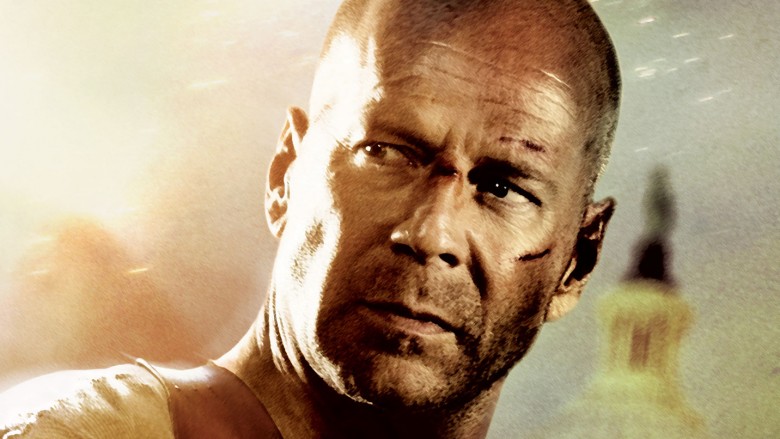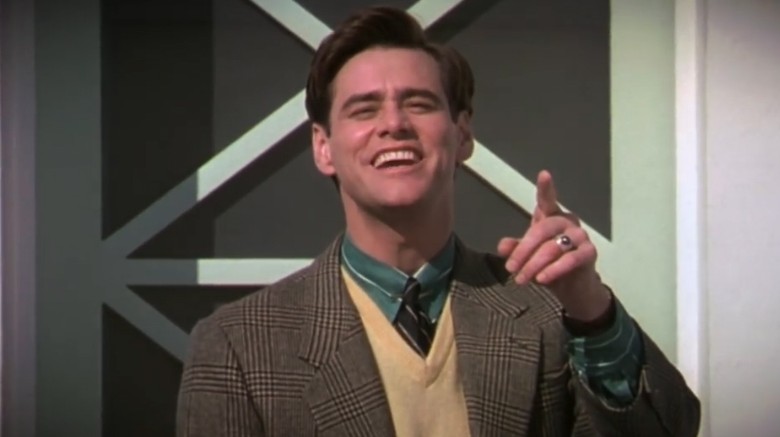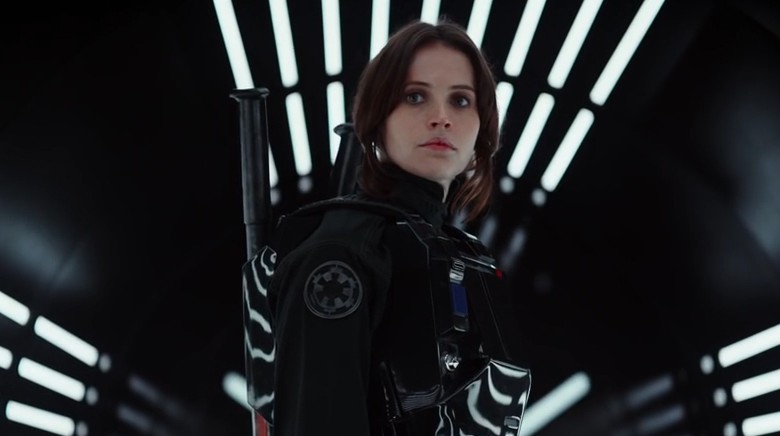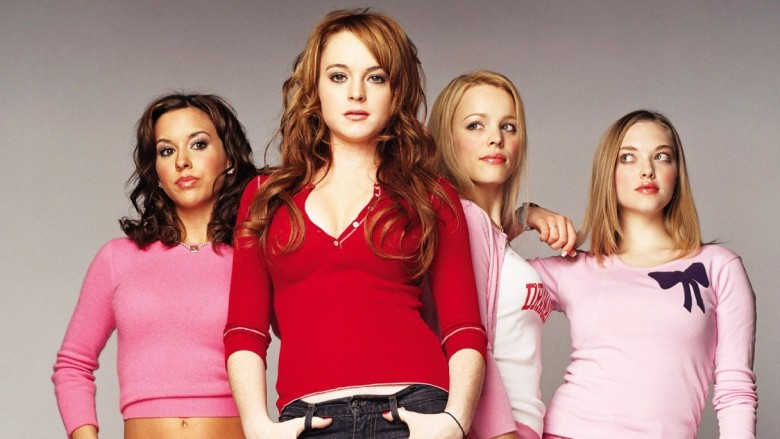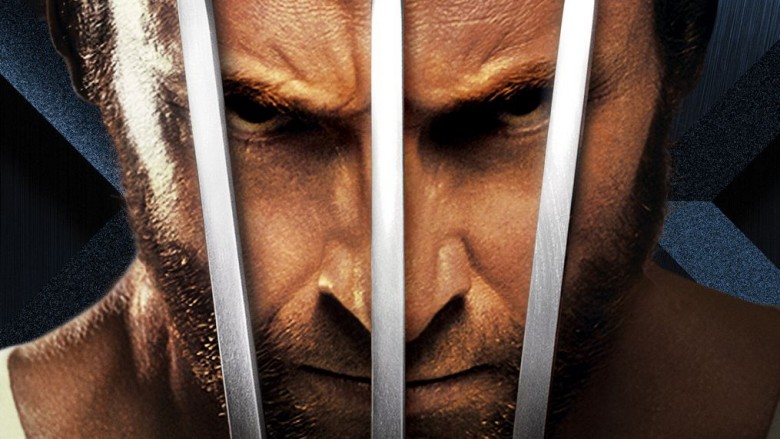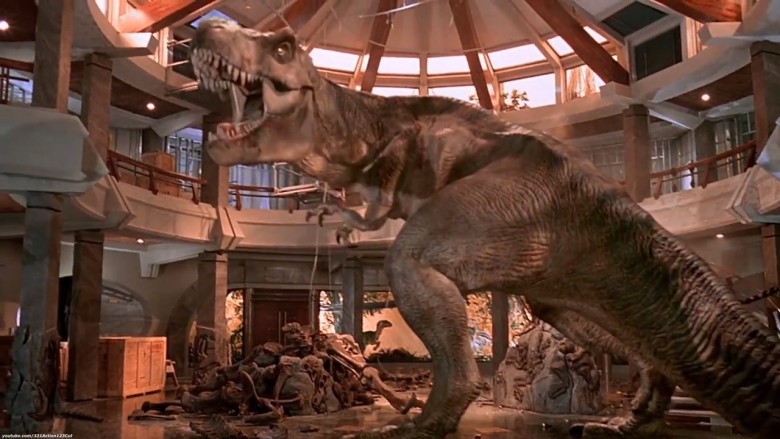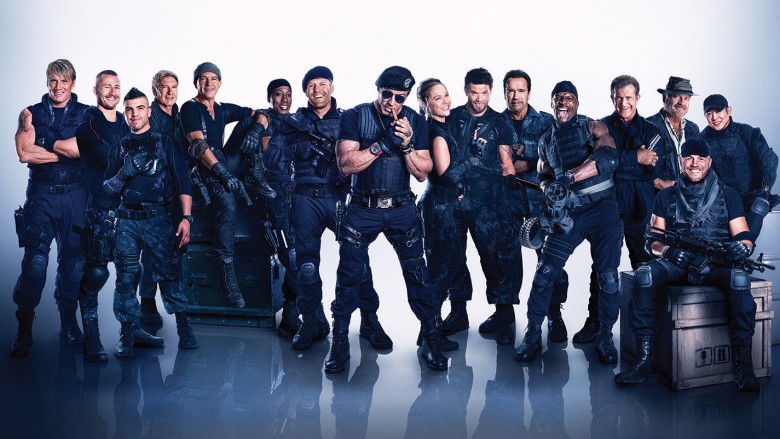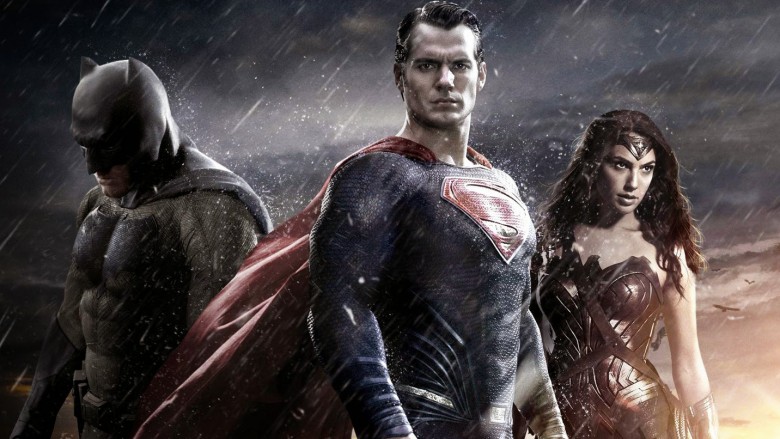Movies That Would Have Been Better With An R Rating
There's nothing inherently better about R-rated movies—in fact, many films work perfectly well without sex, swearing, or violence. Toy Story's Buzz and Woody can bicker just fine without using profanity. In Casablanca, a graphic love scene isn't necessary to sell Bogart and Bergman's romance. The little girl from the The Ring is terrifying all on her own—no extra blood needed.
However, when a studio compromises a film's story in order to earn a more marketable rating, problems occur. In those cases, the R rating isn't about gore or nudity—it's about freedom. In order to tell the best stories possible, filmmakers should be able to use all the tools available, and removing access to powerful imagery and language for financial reasons can hobble a film creatively. But don't just take our word for it—read on to see just how different these movies would be if studios had allowed them to pursue a more mature rating.
Suicide Squad
Deadpool, Marvel's anti-hero action flick, didn't just clean up at the box office—it also received rave reviews and a number of awards and accolades, including two Golden Globe nominations and the Critics' Choice awards for Best Actor and Best Comedy. Suicide Squad, DC's anti-hero action flick, made a fair amount of money, but received such negative reviews that the cast and crew were forced to defend the film in the press after the movie's big premiere.
One of the big differences between the two movies? Deadpool lets the bad guys be bad. In Suicide Squad, characters talk about how bad they are, but the audience never really sees it, which undercuts the film's supposedly subversive nature and makes it hard to buy into their redemption stories. The lack of true evil in Suicide Squad is partly a result of the movie's mandated PG-13 rating, which, according to producer Charles Roven, was done in order to make Suicide Squad work better alongside the other DC Extended Universe projects—an excuse that doesn't totally fly, given that Deadpool is part of Fox's mostly-PG-13 X-Men franchise and still fit in with that series just fine.
Drag Me to Hell
The Evil Dead movies aren't scary because they're gory. They're scary because pretty much anything can—and does—happen. Under Sam Raimi's direction, Evil Dead and Evil Dead 2 are gleefully chaotic. Is there blood? Sure, lots of it, but the movies' real horror comes from the fact that, thanks to the Necronomicon's dark powers, the audience has absolutely no idea what terrors are coming next.
That's why the PG-13 rating for Drag Me to Hell, Raimi's return to the genre that made him famous, was so disappointing. Admittedly, it was Raimi's choice, not the studio's. As Raimi, who was coming off of three back-to-back Spider-Man films, explained, "I didn't want to do exactly the same thing I had done before. This time, I didn't want to have a lot of blood." That's fine. After all, there are plenty of horror movies that don't rely on gore to get the job done.
However, compared to The Evil Dead (and its delightfully unhinged small-screen sequel, Ash vs. The Evil Dead), Drag Me to Hell feels constrained—thanks to the teen-friendly rating, you know exactly how far the film is willing to go. An R rating wouldn't just give Raimi more room to play, it would also give the audience's imagination room to run wild—and that's really the scariest thing of all.
Live Free or Die Hard
You know your movie is in trouble when the main character can't even say his catchphrase. In Live Free or Die Hard, the fourth film in the venerable Die Hard series, Bruce Willis' John McClane suggests that his signature quote might make a good epitaph, but only gets as far as "Yippee-Ki-Yay" before a gunshot hides the rest of the line.
It's basically everything wrong with Live Free or Die Hard, a serviceable but tame action flick, summed up in a single scene. According to the director's commentary, Len Wiseman didn't realize the film was supposed to be rated PG-13 until he was months into production. Bruce Willis wasn't thrilled with the rating, either, saying "I really wanted this one to live up to the promise of the first one, which I always thought was the only really good one," before noting, "It seems almost a courageous move to give a picture an R rating these days."
20th Century Fox, which made Live Free or Die Hard PG-13 in order to "market to every segment of the audience," eventually came around, too. For the movie's home video release, 20th Century Fox put together an unrated version that restored McClane's sorely missed potty mouth, while the next Die Hard flick, A Good Day to Die Hard, was rated R from the very beginning.
The Truman Show
In the age of Twitch, YouTube, and social media, The Truman Show, Peter Weir's reality-TV satire, feels quaint—especially its feel-good ending. Maybe it might've had more staying power if it had stuck closer to the original script—which, unlike the final film, is incredibly disturbing.
Unlike the final film, which traps Jim Carrey's Truman in Seahaven, a suburban neighborhood straight out of a '50s sitcom, Andrew Niccol's original version of The Truman Show takes place in a dark, gritty version of New York City. On the page, Truman doesn't have any of Carrey's natural charisma—he's out of shape and insecure, and when his world starts to break down, Truman absolutely loses it. He watches two men rape a woman and does nothing. He tortures his wife, who he's (correctly) deduced is lying to him. He grabs a baby out of a stroller and threatens to smash its head on the pavement if passersby don't admit Truman is at the center of a conspiracy.
It's edgy stuff—and a guaranteed hard R—but the studio wanted something more comedic, and director Peter Weir agreed. Weir thought that the in-world version of Truman Show, as it was depicted in Niccol's screenplay, was too grim to plausibly attract an audience, and Weir decided instead to create a lighter show that appealed to the fictional viewers' nostalgia—or, as Weir puts it, "this kind of dream of a small-town America that may never have existed but was certainly mythologized in movies and other media."
Rogue One: A Star Wars Story
With Rogue One, Disney and Lucasfilm brought the war to Star Wars. While the original two trilogies and 2015's The Force Awakens are fantasy adventure films, Rogue One delves into the human (and non-human) cost of the war against the Empire, and shows how soldiers and civilians alike suffer as the Skywalker family works out its issues on an intergalactic battlefield.
And, sure, while Rogue One is already the most hardcore Star Wars film ever made (especially with its savage ending), you know what would really drive home the horrors of the Galactic Civil War? A little bit of blood. We're not asking for a Saving Private Ryan-style bloodbath, of course, but a hint of gore—especially in the normally bloodless Star Wars universe—would've gone a long way towards setting Rogue One apart from its predecessor, and could've really driven home the film's anti-authoritarian message.
Not that an R-rated Star Wars will ever happen, of course. Even a PG-13 rating is pretty edgy for Star Wars (before Rogue One, only Revenge of the Sith and The Force Awakens had anything other than a PG rating), and many parents questioned whether or not Rogue One was appropriate for children. Given how important toy sales are to the franchise, it's unlikely Disney will give up on the under-18 contingent any time soon.
Mean Girls
The Motion Picture Association of America, the organization that assigns movie ratings, is an interesting beast. For the most part, according to the MPAA, violence is okay—and gets even more okay as time passes. Foul language is a little trickier, with films like The King's Speech—a light, inspirational story—getting controversial ratings simply because of a few dozen curse words. And sex? That's still a big no-no, even if all you're doing is a little bit of dirty talk.
That's where films like Mean Girls get into trouble. Originally, the MPAA wanted to give Tina Fey and Mark Waters' high-school send-up an R rating simply because its teenage characters talked about sex like, well, teenagers.
Waters had to record new dialogue to replace Mean Girls' dirtier lines after filming was finished, and it's incredibly obvious in the final movie. "There was [a] line," Waters says, "which eventually became 'Amber D'Alessio made out with a hot dog.'" A line about a "popped cherry" was similarly changed.
However, Waters stood his ground when the MPAA's influence started bordering on sexism. As Waters explains, "The line in the sand that I drew was the joke about the wide-set vagina. The ratings board said, 'We can't give you a PG-13 unless you cut that line.'" But Waters compared Mean Girls to Anchorman, which was PG-13 despite a scene in which Will Farrell's character is visibly... excited, and told the ratings board, "'You're only saying this because it's a girl, and she's talking about a part of her anatomy. There's no sexual context whatsoever.'"
With that, the MPAA backed down, although it's hard not to wonder if the movie would've been better served with fewer changes and a more lenient R rating.
X-Men Origins: Wolverine
Wolverine is the best there is at what he does, but what he does best isn't very nice—or, at least, that's what he says. It's hard to tell from X-Men Origins: Wolverine, a mostly dull affair that ruins the character's mystique with a bland and forgettable backstory. Not every superhero movie should have violence (Marvel made the right call when it cut Coulson's death scene in The Avengers to avoid an R rating, for example), but the transformation from a savage killer into a superhero is Wolverine's big arc, and for that to resonate, viewers have to see exactly how bad he used to be.
Thankfully, Fox got its act together for the next Wolverine movies. While promoting X-Men Origins' 2013 sequel, The Wolverine, star Hugh Jackman described the filmmakers' efforts to make a darker film. "Wolverine is really not a good guy at all," Jackman said. "Well...he's good, but he's not nice. We had work to do to really show that."
The third Wolverine flick, Logan, goes even further. Spurred on by Deadpool's success, producer Simon Kinberg confirms that Logan will be "violent... kind of like a western in its tone," and that it'll get an R rating to match. It's been a long time coming, but if this really is Jackman's last turn as Weapon X, at least we'll finally get to see him with his claws fully unsheathed.
Jurassic Park
These days, many moviegoers consider Jurassic Park a modern classic, and it's certainly become a big, profitable franchise for Universal. Still, it's hard not to wonder what hardcore fans of Michael Crichton's original novel, which moved over nine million copies, thought when they first saw Steven Spielberg's adaptation. While the film is largely a family-friendly affair, the book includes weaselly hacker Dennis Nedry holding chunks of his own intestines, park founder John Hammond succumbing to poison as dinosaurs eat him alive, and Jurassic Park's game warden Robert Muldoon blowing a velociraptor to bits with a bazooka.
There was even a world-class director waiting to make a darker, more mature version of Jurassic Park. James Cameron, the man behind Titanic and Avatar (the two highest-grossing films of all time), tried to buy the film rights, but says that Spielberg beat him by "a couple of hours." According to Cameron, his Jurassic Park "would have been Aliens with dinosaurs," resulting in a product more in line with Cameron's other R-rated sci-fi flicks, like the first two Terminator films.
Even Cameron can't deny the power of Spielberg's final product. "Dinosaurs are for 8-year-olds," Cameron says. "We can all enjoy it, too, but kids get dinosaurs and they should not have been excluded for that." That being said, it's still too bad Cameron never got his shot at bringing dark and violent dinosaur action to the big screen—if not for the first Jurassic Park film, then at least instead of the two bland and forgettable sequels.
The Expendables 3
After assembling the ultimate team of Hollywood heavies and producing two violent, frenetic throwbacks to the action flicks of the '80s, star Sylvester Stallone decided to try something new: unlike its predecessors, Stallone and his director, Patrick Hughes, decided to make The Expendables 3 PG-13.
"We want to reach as many people as possible," Stallone said when Deadline Hollywood asked about the decision. "It's very close to an R, believe me, it's right there. But I think we owe it to the next generation. We thought we'd join that club for a while."
It didn't work. Largely because of competition from other PG-13 movies, including Guardians of the Galaxy and Teenage Mutant Ninja Turtles, The Expendables 3 tanked in its opening weekend, with a $16.2 million haul that represented an almost 50% dropoff from The Expendables 2. After the movie's release, Stallone admitted that the PG-13 rating had a lot to do with The Expendables 3's poor box office performance. "I believe it was a horrible miscalculation on everyone's part in trying to reach a wider audience," Stallone said, "but in doing such, diminish the violence that the audience expects." He promised, "I'm quite certain it won't happen again."
Batman v Superman: Dawn of Justice
Unlike some of the other films on this list, we can definitively prove Batman v Superman would be a better film with an R rating. While Batman v Superman's theatrical cut is rated PG-13, a special R-rated extended edition arrived alongside the film's official Blu-ray, and while it doesn't address many of Batman v Superman's bigger flaws (like, say, its Lex Luthor problem), at least it makes a little bit more sense.
In Batman v Superman: Ultimate Edition, Superman's attack on African mercenaries is a lot longer and a lot bloodier, and the scene benefits from its extended runtime by making it much, much clearer exactly how Superman is being framed for a grisly murder. In addition, Ultimate Edition explains exactly why Superman has a problem with Batman, which isn't really addressed in the theatrical cut. As it turns out, Superman decides that Batman's actions are too extreme following his investigation into a prison murder, in which one of the criminals captured by Ben Affleck's Dark Knight is stabbed thanks to his Batman-shaped brand.
Fans who didn't like Batman v Superman's dour tone or poked at the film's many plot holes won't exactly change their minds after watching Batman v Superman: Ultimate Edition—ultimately, it's 30 minutes of the same—but at least the movie makes more sense with the extra footage. Remember, better just means improved: it doesn't necessarily mean good.

